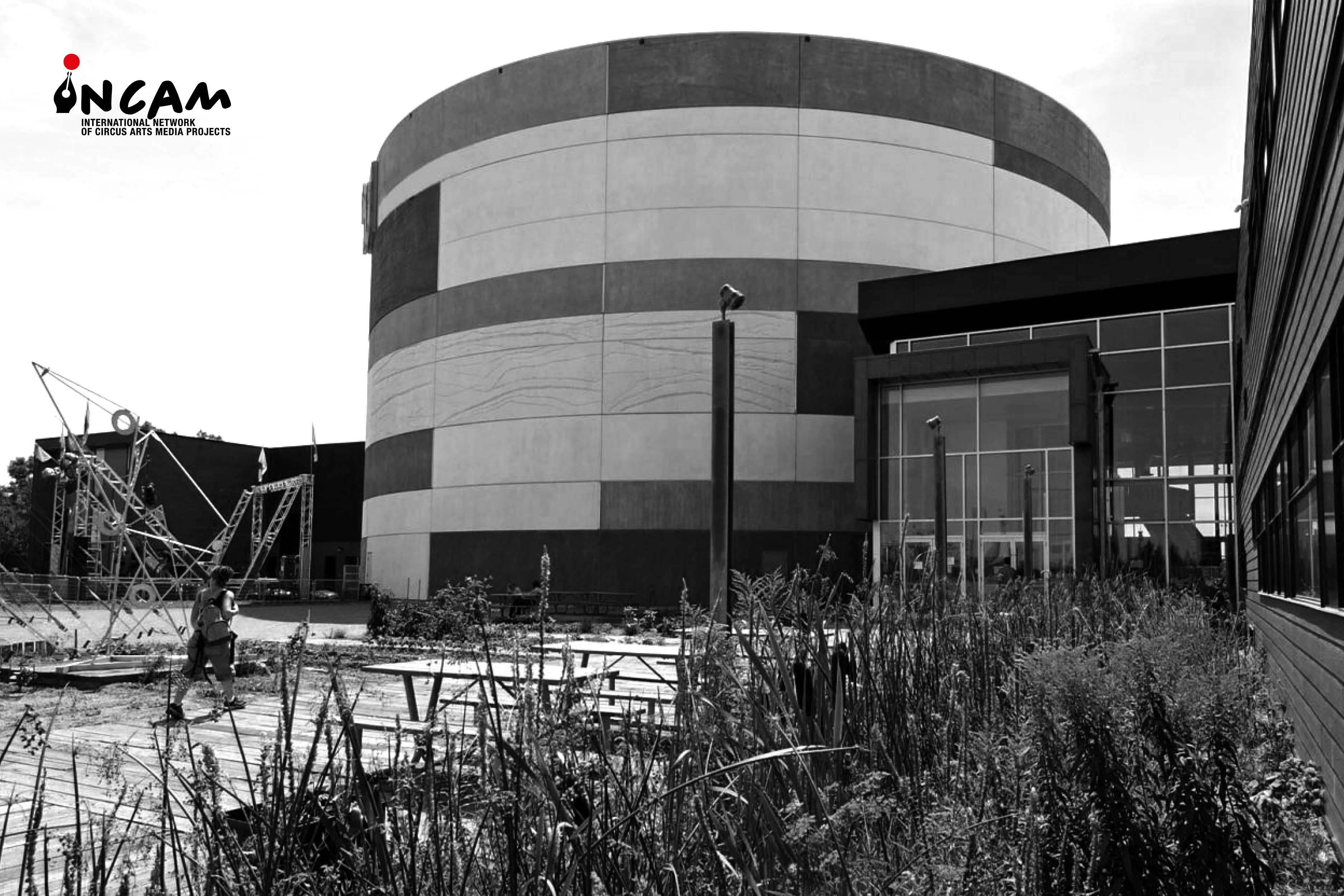La TOHU in Montreal: Green Innovation and Sustainability Challenges

This article is part of IMAC#2, the inter-magazine circus festival project which brings together 3 international circus magazines, Around About Circus, Juggling Magazine and StageLync, all part of the INCAM network, and students from the Université Libre de Bruxelles, who share their thoughts on circus architecture. The analysis of historical and contemporary circus buildings is used as a starting point for discussions on broader issues concerning artistic, social, cultural, and historical interrelations. The exchanges that took place during the international conference New Circus. New Architectures at Latitude 50 in November 2024, offered a source of inspiration. Their diverse backgrounds—ranging from literature, journalism and acting to cultural studies—bring unique perspectives, whether familiar with the art form or newcomers. They are united by a curiosity for performing arts, which led them to the MA Arts du spectacle program, offering exposure to various art forms, including circus. As part of the Circus|Studies, an interdisciplinary and international research project led by Dr. Franziska Trapp, theatre students explore circus dramaturgy, collaborate with emerging artists, and engage in performance analysis and critique. Their experiences culminate in an MA thesis or articles such as the following.

Nestled in the heart of the Saint-Michel district since 2004, La TOHU has become a flagship institution in Montreal. Designed to combine circus arts, ecology and community involvement, it stands out for its modern architecture and commitment to sustainable development. However, I would like to propose a question: can La TOHU really reconcile its modern infrastructure, a reflection of human creativity, with an approach that respects the limits of the environment? This article examines the strategies implemented by La TOHU to meet this ambitious challenge while analysing the resulting tensions and opportunities.
1. Does the architecture of La TOHU support sustainability?
From the outset, La TOHU building was designed to embody a vision of balance between art, community and respect for the environment. According to Événements Attractions Québec, La TOHU was built near the Complexe environnemental de Saint-Michel (CESM), a former landfill site. This choice, far from insignificant, carries a strong message: transforming a degraded space into a place dedicated to culture and community life. According to the Office de consultation publique de Montréal (OCPM), the building's circular architecture, inspired by traditional big tops, symbolises human creativity and the infinite cycle of nature. It optimises space while limiting the use of construction materials and a large proportion of the materials used are recycled, thus limiting its environmental footprint. However, despite these well-considered decisions, the construction of a building remains a human intervention that inevitably has an impact on the ecosystem. As the OCPM report points out, the operation of the technologies it uses requires significant investment and ongoing technical expertise, raising questions about their long-term sustainability.

2. Innovative energy management
According to Événements Attractions Québec, one of the most innovative aspects of La TOHU is its energy system. Part of its power supply comes from biogas from the nearby landfill site, a renewable energy that converts waste into a valuable resource. This approach is fully in line with the circular economy, where the by-products of human activity are reintegrated into productive cycles. This strategic choice helps to reduce dependence on fossil fuels while limiting greenhouse gas emissions. La TOHU's official website notes that the building has been awarded LEED Gold (Leadership in Energy and Environmental Design), a certification by the Canada Green Building Council. This distinction underlines its excellence in terms of sustainability. Its heating, ventilation and thermal insulation systems are designed to reduce energy losses, while rainwater management is based on solutions that respect local ecosystems. However, certain limitations remain. As the OCPM points out, although biogas is a greener alternative, its extraction and use are not entirely carbon emission-free: maintaining these technologies necessarily requires substantial investment and ongoing technical expertise, raising questions about their long-term viability.

3. Nature education and awareness promoted by La TOHU
Alongside its architectural and technical choices, La TOHU is actively committed to raising public awareness of the importance of the environment and sustainable development. It offers a variety of educational activities aimed at young people, families and the general public. By integrating environmental themes into its cultural programming, La TOHU goes beyond its role as a simple arts venue, to become a genuine agent of social change. This educational approach plays a key role in broadening its environmental impact. It aims to convey to the public the idea that preserving nature is a shared responsibility, requiring a collective effort rather than action limited to institutions alone.
4. There's still a long way to go
Despite its many innovations, La TOHU is not immune to certain paradoxes. Although it has succeeded in impressively reducing its ecological footprint, the report published by the Quebec Ministry of Culture shows that an infrastructure of this scale inevitably consumes natural resources. To go even further, La TOHU could explore new approaches. The Réalisons Montréal website suggests adopting biodegradable materials, installing solar panels to supplement biogas, and introducing innovations such as green frontages to further reduce its impact. It could also become a research centre, working with academic institutions to experiment with and promote eco-responsible practices. Finally, the OCPM report also recommends that regular monitoring of its ecological footprint over the long term would provide a more accurate picture of the effectiveness of its current choices and would also enable it to fine-tune its strategies for a more sustainable future.
5. In conclusion: an innovative model with room for improvement
Montreal's La TOHU is an inspiring example of modern infrastructure that strives to combine architectural innovation with respect for the environment. Thanks to its use of biogas, its circular architecture and educational programmes, it demonstrates that it is possible to design a cultural space where human creativity and ecological responsibility meet. Nevertheless, this balance remains fragile. Although its modern infrastructure considerably reduces its ecological impact, it cannot totally eliminate it. More than just a building, La TOHU embodies a manifesto: one ongoing commitment is to push back the boundaries of what is possible. By pursuing its initiatives, La TOHU is paving an inspiring path for other institutions wishing to design spaces where art, technology and nature can harmoniously coexist.

About me and this piece of writing: I'm a student at the ULB - Université Libre de Bruxelles. I studied languages and literature, to become a teacher, because I thought from a very young age that this would be the best thing for me. However, over time, thanks to my student life in Brussels, the activities, events, conferences... organised by the University, and above all, thanks to my encounters with other students, all passionate about different fields than the one I was studying, my field of possibilities widened. And the desire to turn to the performing arts, in particular, theatre, was born. So I changed my Master's degree. Today, I have a strong desire to open a cultural centre abroad after my studies, but above all, I also have an ever-growing ecological conscience. I'm keen to understand how best to reconcile artistic creation and ecological awareness, so I chose La TOHU to exemplify my subject, as they seemed to have taken up such an audacious challenge.

